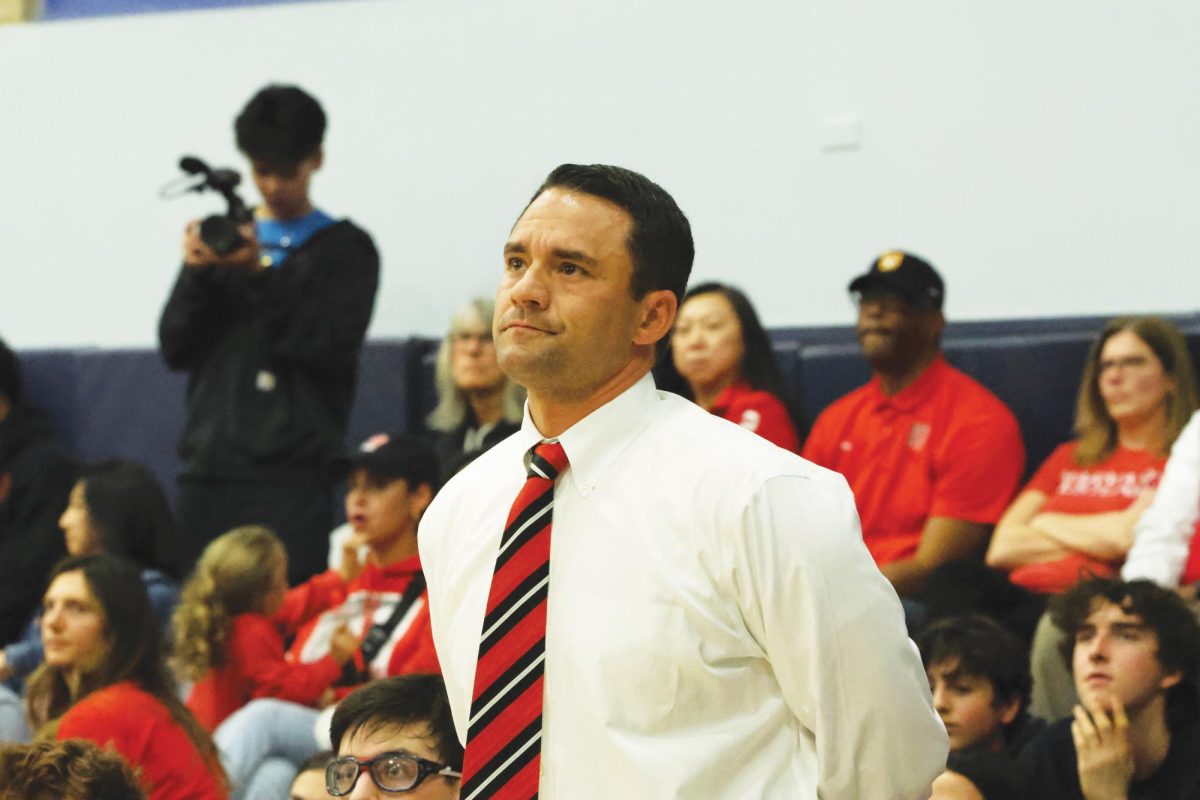By Stephanie Deutsch
For several years, the performing arts staff has toyed with the idea of producing the original 1966 version of the musical “Cabaret.”
The fact that it is an ensemble show, has 29 parts and conveys a message Director of the Theatre Program Christopher Moore believes is just as “current and relevant today as it was back in the â30s when it takes place,” were all factors that convinced the directors to finally put on the show Nov. 3-5.
The play takes place in Berlin during the rise of Nazi power in the late â20s. It is based on “I Am A Camera” by John Van Druten, which is based on the novel “Goodbye to Berlin” by Christopher Isherwood.
Justin Kuritzkes â08, who plays Clifford Bradshaw, describes his character as a “young American writer who is just looking for something to write about.” Bradshaw travels to Berlin and falls in love with Sally Bowles, played by Chloe Searcy â07. Bowles is a “childlike, but playfully seductive” cabaret dancer, Searcy said, who works at the Kit Kat Club. In the second act, the plot becomes more complex and the characters reveal their true colors and who they really are.
“I would say weâre always pushing the envelope here in terms of the stuff we do,” Moore said. “We thought this was an important story to tell, but I would definitely say itâs PG-13.”
“I think people are going to be shocked,” said Clay DeRouen-Hawkins â07, who plays the Emcee. “It is dirtier than anything theyâve done certainly since Iâve been at this school.”
The cast spent an hour and a half discussing in depth the relevance and parallels of the play today.
“It has a pretty profound message to deliver and I donât know how people are going to walk away from it,” Kuritzkes said.
The role of the Emcee and the scenes that take place in the “down and dirty clubs” are “somewhat highly stylized,” Choreographer Michelle Spears said.
“The mentality is very in your face, highly confrontational, highly theatrical as opposed to realistic,” Spears said.
Set designer Alex Kolmanovsky started his preparation for “Cabaret” last April when he began envisioning Rugbyâs extreme transformation into a cabaret club during the Nazi regime. By discussing the mood of the play with the directors and understanding the depths of each character, Kolmanovsky was able to create a small model of the set design. A vegetable shop on wheels is turned around to reveal part of a train car, and a cabaret club gives way to the streets of Berlin during the show.
“With scenery, youâre stuck there for three hours, so a certain amount of un-clarity, a certain amount of mystery, is okay with this set,” Kolmanovsky said.
He designed oversized windows with light flashing through, giving the effect of a “subliminal feeling that someone is constantly watching you.”
The windows are supposed to remind people of Kristallnacht, the “Night of Broken Glass,” Master Carpenter Rees Pugh said.
Along with the set design, the costumes add to the dark but alluring atmosphere.
Costume designer Lisa Peters credits her inspiration to vintage “Cabaret” posters, historical clothing of the â20s and â30s and rich gem-like luxurious colors.
Peters is designing 15 hand made pieces that represent a “decadent and tawdry version of a lowbrow entertainment,” and appear “showy, but in a worn out kind of way.”
As the playâs subject matter darkens, the rich colors are replaced by stark tones, creating a sense of a “gray world.”
“Itâs almost like you were peeling away layers,” Peters said. “Youâve got this outer covering that looks all beautiful and glamorous, and then you slowly realize that whatâs underneath all of that and what itâs becoming is much more sad.”
With 29 cast members, most of whom act in more than one role, Peters must prepare a hundred or so costumes to be worn throughout the play.
“The most difficult part is achieving the right period look,” Peters said. “You canât just go out on the street and buy a â20s dress.”
“Thereâs a certain point for me when the story takes over, when the play finds itself and thatâs a moment that at a directorâs point of view, that is the moment when it just starts to tell you what it is instead of you trying to go in and find it,” Spears said. “I love that all of a sudden it appears on stage and youâre like…”
“There it is,” Spears and Moore said in unison. “That moment when it all sort of comes together.”
Tickets are sold at the box office for $15.





































